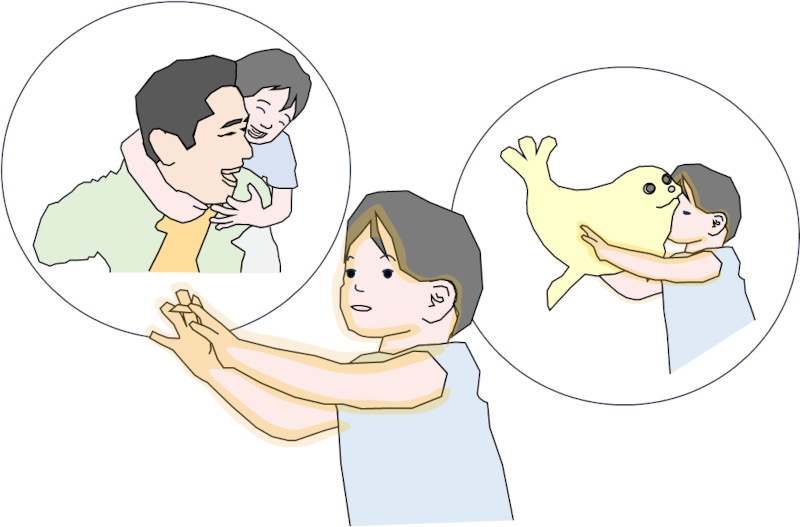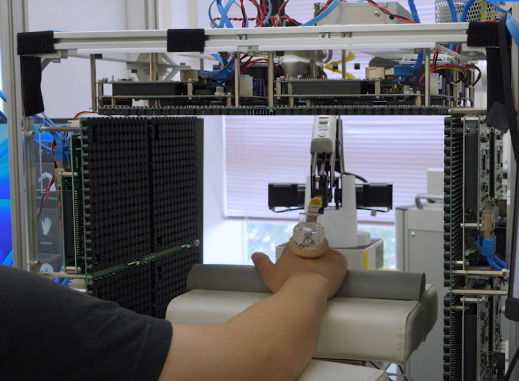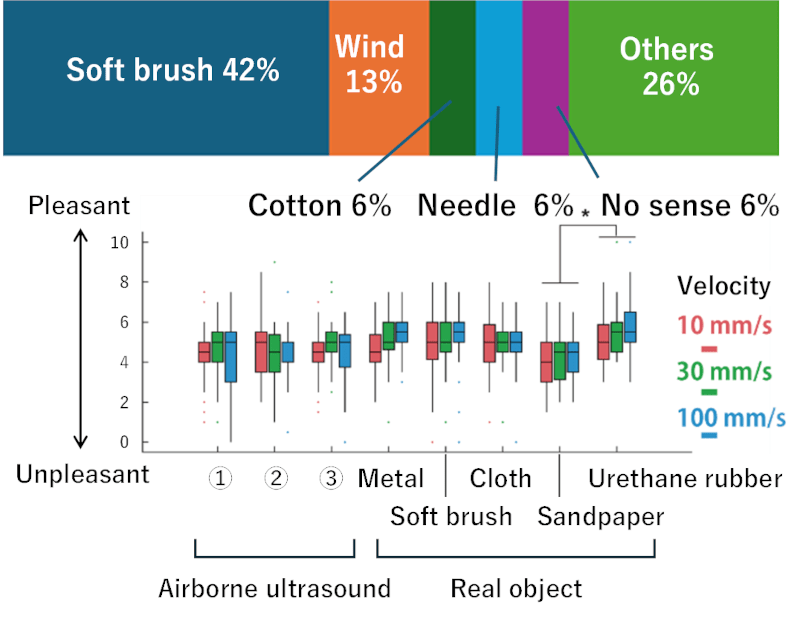Progress Report
A haptic partner that supports children's minds[1] A haptic partner that supports children's minds
Progress until FY2024
1. Outline of the project
In this project, we are developing technology to improve children's mental state using tactile reproduction technology that can reproduce various tactile sensations without contact. The haptic partner, an AI that acts as a partner, generates tactile sensations across multiple body parts in addition to visual and auditory sensations and influences emotions. Haptic sensation induced by touch, strongly linked to pleasantness and arousal, stabilizes children's minds and helps them acquire desirable mental responses. The haptic partner is dynamically optimized for each child, changing the appearance and texture according to each child's preferences and situation.
So far, we have been verifying whether it is possible to synthesize the tactile sensation that a child feels when a caregiver gently touches them using airborne ultrasound.
Specifically, we compared the pleasant tactile stimulation produced by airborne ultrasound with that by real objects through psychophysical experiments on adults. We found it possible to generate a stimulation almost equal to, and in some individuals, even more pleasant than, the stimulation produced by a real object.

2. Outcome so far
As shown in the photo below, we developed a device that allows participants to experience both tactile stimulations created by ultrasound and contact with a real object by semi-automatic switching. Thirty-one participants without prior knowledge of ultrasound tactile presentation were asked to evaluate the displayed tactile sensations. During the experiment, we hid the participants' hands with a cloth so that they could not be seen.
They were asked to evaluate the tactile sensation with the numbers from 0 to 10 in six categories: softness, smoothness, warmth, pleasantness, arousal (tension/excitement), and ticklishness, for typical objects that feel pleasant when lightly touched, such as urethane rubber, a soft brush, and cloth, as well as three stimulus samples generated by ultrasound.

Immediately after the series of experiments, the participants were asked to express how the ultrasound stimulation felt orally. As the following upper figure shows, 48% of participants answered that the ultrasound stimulation felt like a brush or cotton. Next, 13% of participants felt like wind, and 26% responded that they could not identify objects or felt other objects, including human skin.
The lower figure below shows the results of comparing the degree of pleasure between ultrasound stimulation and contact with a real object. The distribution of pleasantness levels by ultrasound showed no significant difference from those of samples representing comfortable textures, such as a brush and urethane rubber.

3. Future plans
It was confirmed that ultrasound can generate a pleasant tactile sensation similar to that of real objects. In the future, we plan to obtain more rigid evidence and proceed to research improving children's mental states.